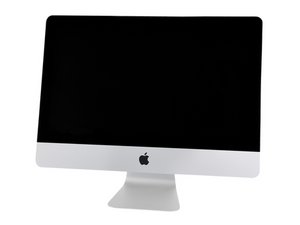Purple Hue on the edge of the Screen after SSD UPGRADE
Hi iFixit,
I recently replaced my hard drive with an SSD using this bundle: iMac Intel 21.5" Retina 4K Display 하드 드라이브 교체
The speed works great and the repair was easy. But I noticed that there’s a purple/purple hue on the left and right side of the screen.
Do you know what the reason for this might be ? I want to order more adhesive and fix it up, but I’d like to know if you have any ideas before I start.
Thanks,
Rama
좋은 질문입니까?

 1
1 
 1.1k
1.1k  2.6k
2.6k 


댓글 6개
@rama_watts - Did you use the special adhesive cutter that comes in the adhesive strips kit?
DanJ 의
Yes, and I also made sure not to push the card in more than 3/8"
Rama Watts 의
@rama_watts - Double check to make sure the internal display is the issue. Plug in an external display does it come up clean?
The newer iMac's 2012 and newer use a different video dialog (iDP also known as eDP vs the older LVDS). Think it like the difference between analog vs digital TV the over the air signal often has ghosting and other artifacts unlike the newer digital signal. The only area which makes sense here is either an issue within the displays T-CON board or the main logic board.
Isolating which using an external display is the only way I know how to figure this out.
DanJ 의
@danj Hi Dan,
Sorry for such a late reply. I've plugged in an external display and the external display does not show any purple hue on the edges. Any suggestions?
Rama Watts 의
@rama_watts - Sorry my original answer applies here - Time for a new display.
DanJ 의
댓글 1개 더보기